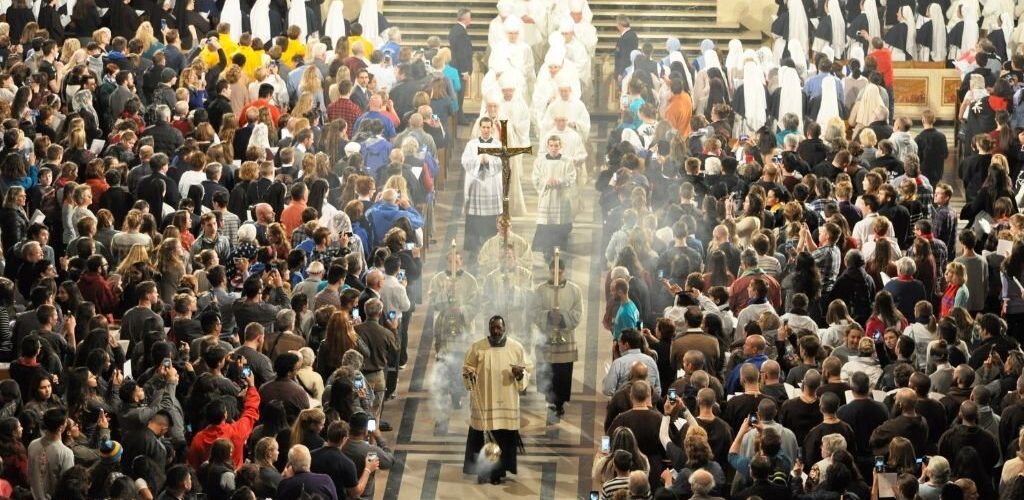
Anyone who works on Capitol Hill or within a mile or two of Union Station in Washington, D.C., knows what happens on the day of the annual March for Life.
Lots and lots of folks roll into town. The streets are lined with buses packed with students — often the orange-yellow school buses used for short-range work. Then there are miles of rented buses that roll in from schools — middle schools, high schools and colleges — all over the Southeast, Northeast, Mid-Atlantic and even the Midwest.
It’s pretty easy to note that the vast majority of the buses are from Catholic institutions. It’s harder to judge the points of origin for groups that fly into D.C. to take part.
If you watch the march itself, you’ll see all kinds of unusual groups: Feminists for Life, Atheists for Life, Democrats for Life, the Pro-Life Alliance of Gays and Lesbians, etc. There are lots of evangelical Protestants present and their numbers have risen since the marches began in 1974. following Roe v. Wade.
But the vast majority of people who arrive early — especially for the annual Vigil for Life (first photo) at the National Basilica of the Immaculate Conception — and stay late are Roman Catholics. This is fitting since the march began with the work of a Catholic Democrat named Nellie Gray who, after Roe, left her work as a Labor Department lawyer to become an activist. The symbol of the march — a rose — is also a popular symbol for St. Mary, the mother of Jesus.
Why bring this up?
Well, have you heard that 81 percent of white evangelicals just love Donald Trump? It’s safe to assume that most readers have heard that, methinks.
Somehow, that often cited (but rather complex) fact led — according to the Politico — to Trump’s historic decision to address this year’s March for Life, as seen in this headline: “Trump tries to shore up evangelical support at March for Life rally.”
Never mind that the crucial states that gave Trump the presidency — especially in the Midwest — are heavily Catholic and usually (think Ohio) are won by the candidate who wins the Sunday-morning Catholic swing vote. Here’s the Politico lede:
President Donald Trump vigorously attacked Democrats as radicals who want to “silence Americans who believe in the sanctity of life,” as he attempted to shore up his evangelical support .. by becoming the first president to speak in person at the annual March for Life rally in Washington.
Glad outlets like @Politico are covering the March like this. But it’s a bit amusing to see it described as “evangelical” when a high majority of marchers every year are Catholic. https://t.co/GZ3asVi1Cd
— Daniel Darling (@dandarling) January 24, 2020
It’s rather interesting — “bizarre” is an appropriate word, as well — that this Politico piece doesn’t contain a single reference to the word “Catholic.”
Is the big idea here that Trump is in more trouble with white evangelicals than he is with mainstream and right-of-center Catholics, many of whom are deeply troubled by his immigration rhetoric?
Let’s keep reading:
Speaking to tens of thousands of anti-abortion advocates from across the country, Trump emphasized how his administration has overseen the confirmation of 187 federal judges who “apply the constitution as written.” He also highlighted his successful nominations of Supreme Court Justices Neil Gorsuch and Brett Kavanaugh, two judges who have records of anti-abortion positions. And speaking about himself, Trump said “unborn children have never had a stronger defender in the White House.”
The lines drew raucous applause and showed how many of his evangelical supporters — a vital part of Trump’s electoral success in 2016, and a key coalition for his 2020 reelection campaign — are undeterred by the drama surrounding his Senate impeachment trial.
It appears that the assumption here is that the March for Life participants are overwhelmingly evangelical Protestants.
Why would political-beat reporters assume that?
Is it too late for a correction?










